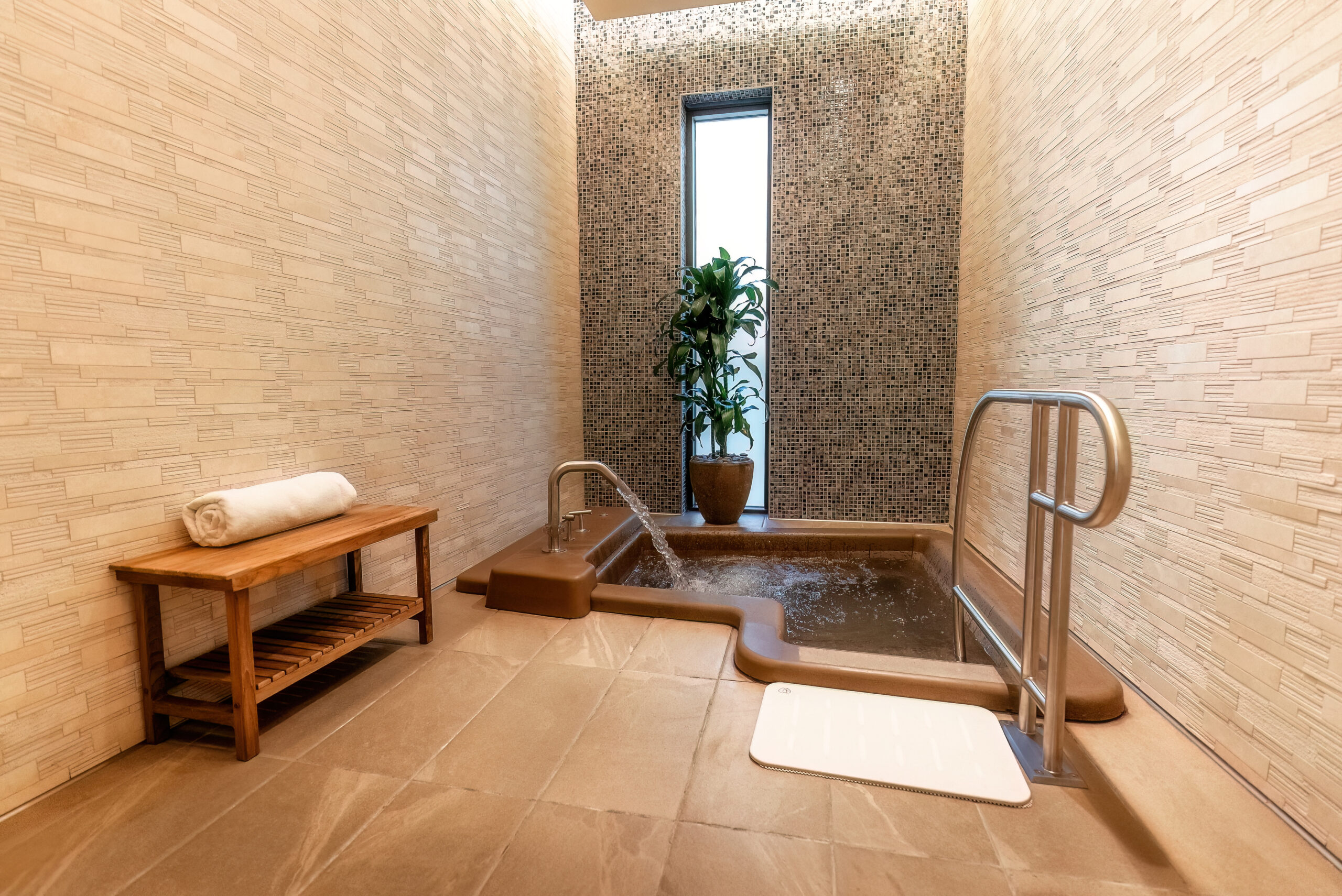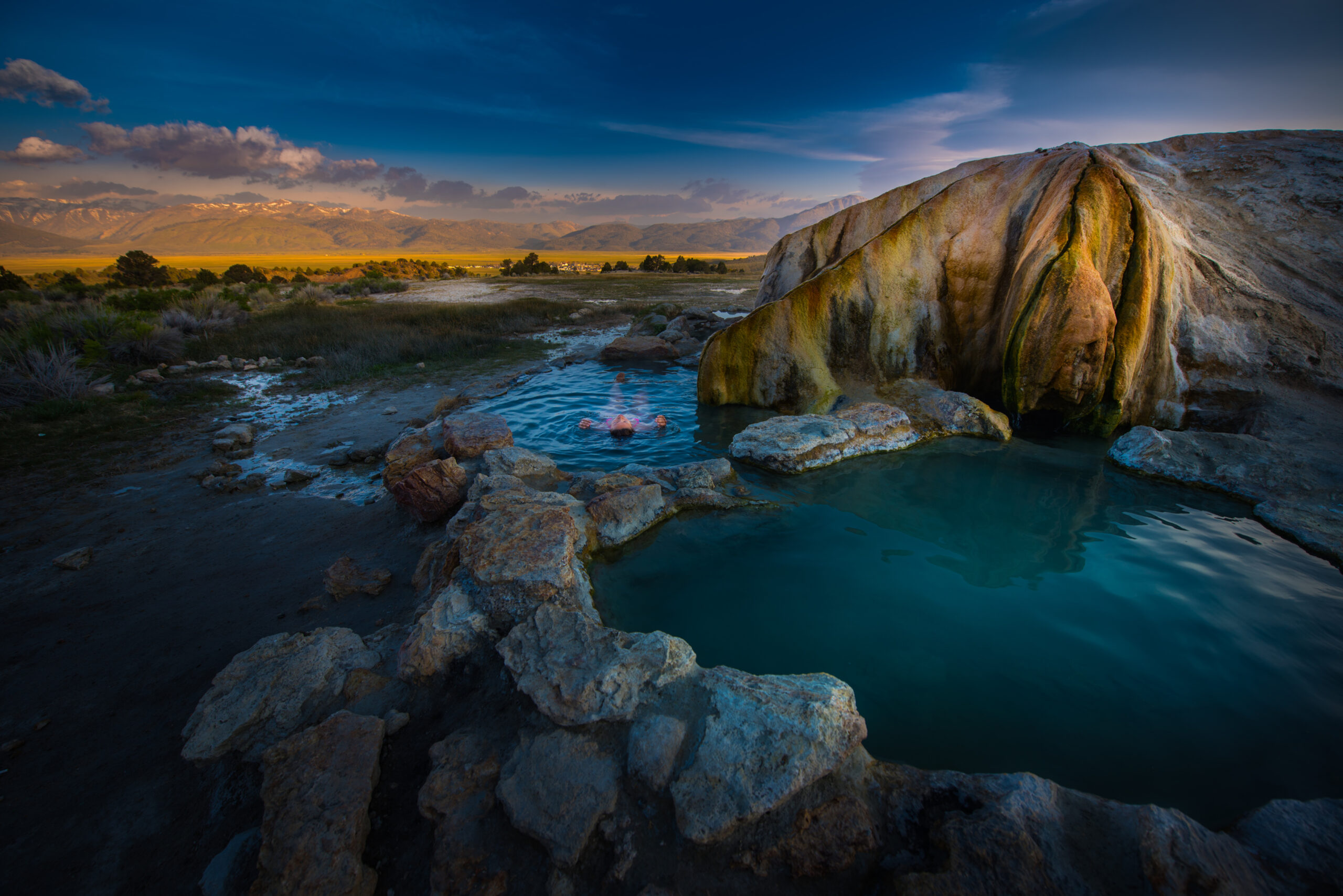By Rebecca L. Rhoades
For centuries, the Agua Caliente Band of Cahuilla Indians have been conscientious keepers of the Agua Caliente Hot Mineral Spring, located in what is now downtown Palm Springs, California. Considered a living being, the sacred hot spring was the heart of the tribe’s existence, providing irrigation, potable water, warm baths, and healing powers.
According to tribal legend, hundreds of years ago, one head man named Tu-to-meet arrived sick and lame to the area that is now known as Palm Springs. There was no water, so he took his staff and jammed it into the ground — and out of that came a flowing spring. He named it Séc-he, meaning the sound of boiling water.
“Then he went into the water and cured himself, and his people followed,” says Tribal Council Secretary Vincent Gonzales III.
By the late 1880s, the spring’s reputation for restorative properties had become so renowned that the tribe erected a succession of bathhouses that would continue through 2014. By 1938, the city of Palm Springs, which took its name from the presence of Séc-he, had grown up around the spring. And generations of travelers have enjoyed the therapeutic powers of the hot silky waters’ unique mineral composition. A soak in the slightly sulfuric water is said to relieve stress, ease muscle aches and joint inflammation, and help treat skin conditions such as dryness, eczema, and acne.
Following an almost 10-year closure and redevelopment plan, the tribe re-opened the hot springs in April as part of the new luxurious Spa at Séc-he. The 73,000-square-foot spa and bathhouse celebrates the waters that flow from a cavern 8,000 feet below the ground. The centerpiece is 22 individual mineral baths in which guests can enjoy 15-minute private soaks in the 105-degree water.

“This very special water has had special meaning to our tribal community for such a long time,” says tribal chairman Reid Milanovich. “It is a place where our tribal members and visitors can come to once again soak in hot mineral water and take part in cultural traditions of wellness like no other place in the world.”
The Spa at Séc-he is just one of a growing number of wellness-focused properties around the country — and the world — that are harnessing the healing powers of Earth’s natural mineral hot springs.
Therapeutic H2O
There are at least 1,664 known geothermal springs in the U.S., ranging from “primitive” or undeveloped pools, to day spas and public bathhouses, and luxurious resorts that are destinations unto themselves. According to Vicky Nash, executive director of the Hot Springs Association, an organization that represents the owners and operators of hot springs properties, there are about 250 commercial spas and wellness centers across the country that offer hot springs as part of their therapeutic program.
“There’s so much growth in the industry right now,” she says. “There are a lot of ownership changes, large-scale redevelopments and brand-new projects. There’s been a big resurgence in interest in hot springs over the past three years. People want to do activities that boost their immune systems, and they’re much more aware of their overall wellness on a daily basis.”
The practice of bathing in mineral hot springs for health benefits gained in popularity in the late 1800s in the U.S.
“Going to a health resort was the thing to do,” Nash notes. “These places would offer 12-day treatments that included soaks in hot springs.” By the early 1900s, though, many properties became recreation-oriented and stopped touting the wellness component.
Located in Morristown, Arizona, about an hour northwest of downtown Phoenix, Castle Hot Springs is considered the nation’s most luxurious hot springs resort. Appearing like an oasis cradled within the rocky foothills of the Bradshaw Mountains, the landmark resort has captivated presidents, celebrities, and business tycoons for more than 100 years.
Here, more than 200,000 gallons of steaming 120-degree water flow out of the rocks daily from an underground cistern into a series of rejuvenating pools.
At the turn of the century, patients would travel to the property to receive mineral cures. They would stay for two or three months and spend their days golfing, playing tennis, exploring the landscape, and soaking in the steaming waters. During World War II, the property was transformed into a rehabilitation center for injured soldiers, one of whom was future president John F. Kennedy.
The therapeutic qualities of the water at Castle Hot Springs are attributed to a naturally occurring mix of minerals that includes potassium, which is said to reduce high blood pressure and improve heart health; magnesium, which helps regulate the body’s energy and nervous system; and lithium, which offers a calming and mood-stabilizing effect.
“Natural thermal mineral waters are used all over the world to rehabilitate health in people with a variety of conditions, from skin and metabolic issues to digestive complaints, arthritic aches and pains, and even stroke,” says Marcus Coplin, a doctor of naturopathic medicine and director of hydrothermal medicine for the Balneology Association of North America.
Derived from the Latin word “balneo,” which means “to bathe,” balneology is the science of therapeutic bathing in natural mineral waters.
Taking the Plunge
According to Dr. Coplin, there are four ways to reap the benefits of mineral waters: bathing in it, inhaling the steams and vapors, drinking it, and peloid therapy, or the application of mud that has been soaked in the mineral-rich liquid. This latter treatment is common throughout Europe. At Iceland’s famous Blue Lagoon, bathers are encouraged to slather their face and body with a milky-white mud, pulled from the bottom of the geothermal pool, that’s rich in silica and sulfur.
“Peloid mud shows a lot of anti-inflammatory properties and traditionally has been used for joint pain and skin issues,” he explains. “But in the U.S., 99% of what people are going to experience when they go to a hot spring is soaking in the water.”
The therapeutic qualities associated with hot springs are thermal, physical, and mineral. Heat from the water is transferred into the body, creating a thermal effect that reduces inflammation, increases circulation, and stimulates metabolism. The pressure of the water on the body produces an anti-gravity effect, relaxing the muscles and improving circulation. Then there are the mineral effects. Studies that have compared the effects of hot tubs versus mineral hot springs have found that the mineral component of hot springs does cause biochemical responses in the body that reduce pain and inflammation, stimulate the immune system, and synchronize hormonal responses.

The mix of minerals varies from place to place, depending on the geology of the area. Common minerals include sulfur, sodium chloride, potassium, and even silica boron.
“Sometimes you’ll see arsenic or lithium in the water, but these are at levels that will actually promote a healthy response in the body,” Coplin says.
“It’s the synergy of the heat, water, and minerals together that creates the most benefits,” he adds.
Proven Relief or Folkloric Myth?
While mineral waters can offer some health benefits, it’s important to note that they are not supernatural elixirs that can cure the sick and reverse the aging process, especially when used in a typical spa setting.
Tina Newman is the director of sales and marketing for Castle Hot Springs. She points to some vintage advertisements for the property that show a wizened elderly person entering the water.
“They look like they’re 106 years old. But when they come out, they’re 22 again. If that’s the case, dunk me in!” she exclaims with a laugh.
Dr. Coplin points out, “Don’t let someone tell you that 15 minutes in the water is going to do anything more for you than be a relaxing soak. It takes multiple treatments over a course of time to really rehabilitate whatever condition you may have.”
He notes that most of the water sites in the U.S. are recreational in their application. Which isn’t necessarily a bad thing. In fact, the word “spa” originated as an acronym for the Latin phrase “Salus per Aquam,” or “healing through water.” And numerous studies have shown that the application of warm water, with or without minerals, counteracts stress, relieves anxiety, and eases tense muscles.

“There are so many benefits that can occur just from the process of relaxing and turning off your mind,” Dr. Coplin explains.
Nash concurs. “You’re going to get some benefit out of it,” she says. “Just soaking in warm mineral-rich water is going to make you feel better.”
For Gonzales and the folks at the Spa at Séc-he, a soak in the soothing waters of the Agua Caliente Hot Springs allows you to leave your worries behind and immerse yourself in traditions that have been practiced for centuries.
“When you experience our medical waters, I want you to think of the story of Tu-to-meet,” he says. “I want you to take a moment and really take in the essence of Séc-he and what it means to our people and what it can do for you and your body. Use it for what our people intended it for, and that’s for healing.”
Inspired to take the waters yourself? Here are eight additional hot spring attractions, from cavernous pools to family-friendly resorts, worth checking out.
Calistoga Spa Hot Springs: Located in downtown Calistoga, Calif., in the heart of beautiful Napa Valley, this LGBTQ-friendly boutique resort offers four hot spring-fed pools with temperatures ranging from 80 to 104 degrees. Enjoy luxurious spa treatments that include volcanic ash mud baths. www.calistogaspa.com
Chena Hot Springs Resort: Fairbanks, Alaska, may get cold, but you’ll stay warm and relaxed at this year-round destination. The property operates several indoor and outdoor tubs, an indoor swimming pool, and an outdoor wading lake that’s the perfect spot to take in the northern lights in winter. www.chenahotsprings.com
Glenwood Hot Springs Resort: You’ll be surrounded by breathtaking Colorado mountain views as you soak in the world’s largest hot springs pool. At more than 405 feet long by 100 feet wide, it holds more than 1 million gallons of 93-degree water sourced directly from the ancient Yampah spring. www.hotspringspool.com
Homestead Crater: While each hot spring has its own unique mineral properties, this geothermal spring in Midway, Utah, offers a one-of-a-kind experience. The 400-foot-wide pool is hidden inside a 55-foot-tall beehive-shaped cavern. Soak in the 96-degree waters or enjoy a more active adventure. At 65 feet deep, the spring is ideal for scuba diving and snorkeling. www.homesteadresort.com
Hot Springs National Park: Nicknamed “The American Spa,” this national park in Hot Springs, Ark., is known for its 47 thermal springs that have been used for centuries by local Native American tribes. Bathing is allowed in approved facilities in the park and on Bathhouse Row — a collection of eight historic bathhouses that date back to the early 1900s. www.nps.gov/hosp
Hot Springs State Park: You’ll marvel at the picturesque terraces along the Big Horn River in Thermopolis, Wyo., where travertine minerals in the flowing waters created striated formations of gold and yellow. The park is home to three soaking pools, including the Wyoming State Bath House, which is free to the public. www.hermopolis.com
Ouray Hot Springs: You don’t need to go to an expensive spa to experience the benefits of geothermal waters. At the public-use Ouray Hot Springs Pool and Fitness Center in Ouray, Colo., the entire family can soak in the sulfur-free waters while marveling at the surrounding snow-capped peaks. www.ourayhotsprings.com
Langford Hot Springs: Relish a primitive bathing experience in a series of natural springs along the Rio Grande in Big Bend, Texas. Once the site of a large bathhouse, all that remains today is the limestone foundation — and, of course, the soothing warm waters. This location is best for the adventurous bather, as it’s a half-mile hike along uneven trails to the river. www.visitbigbend.com
Keep up with our latest travel articles on Green Living’s Travel page!






